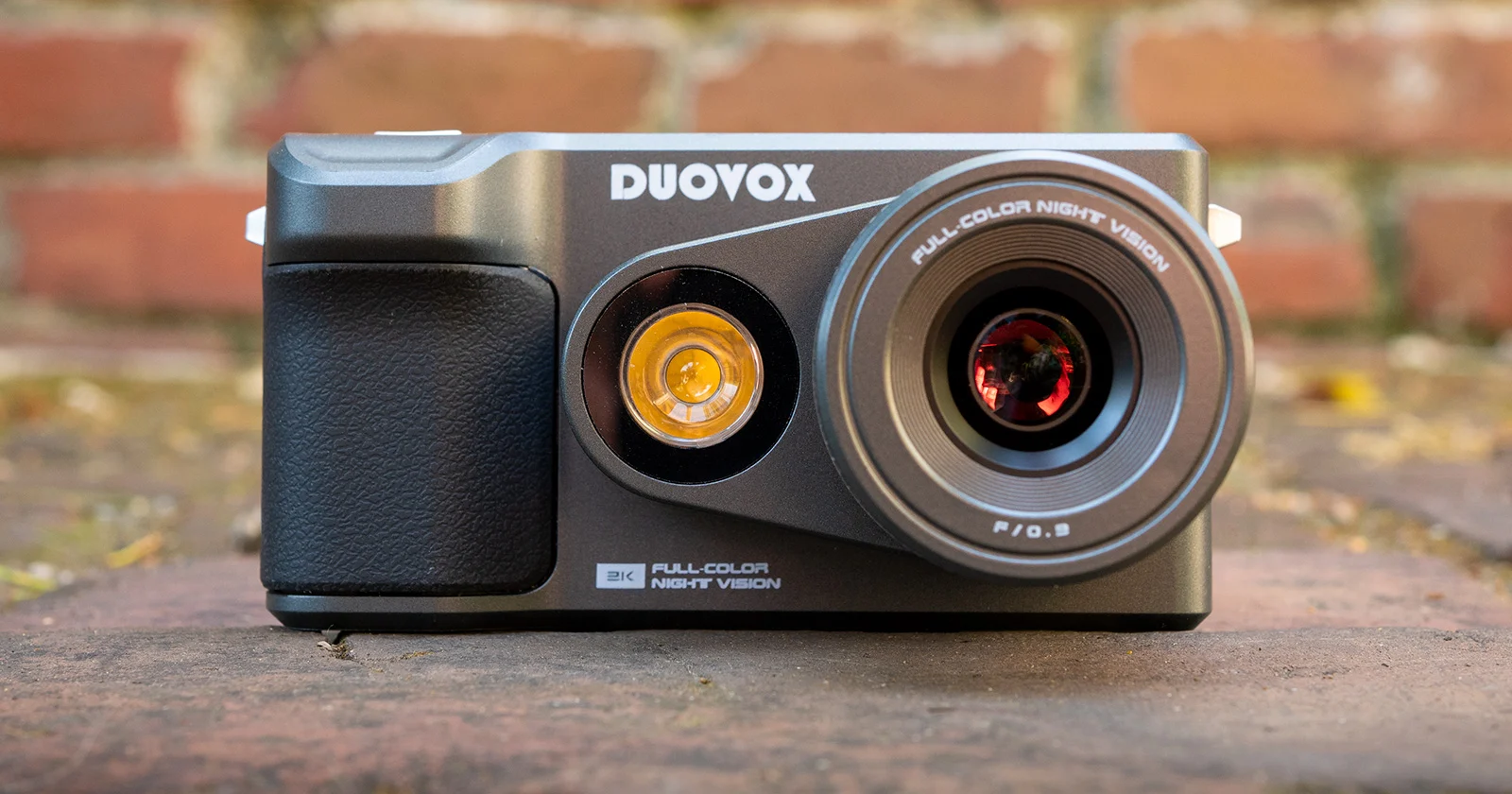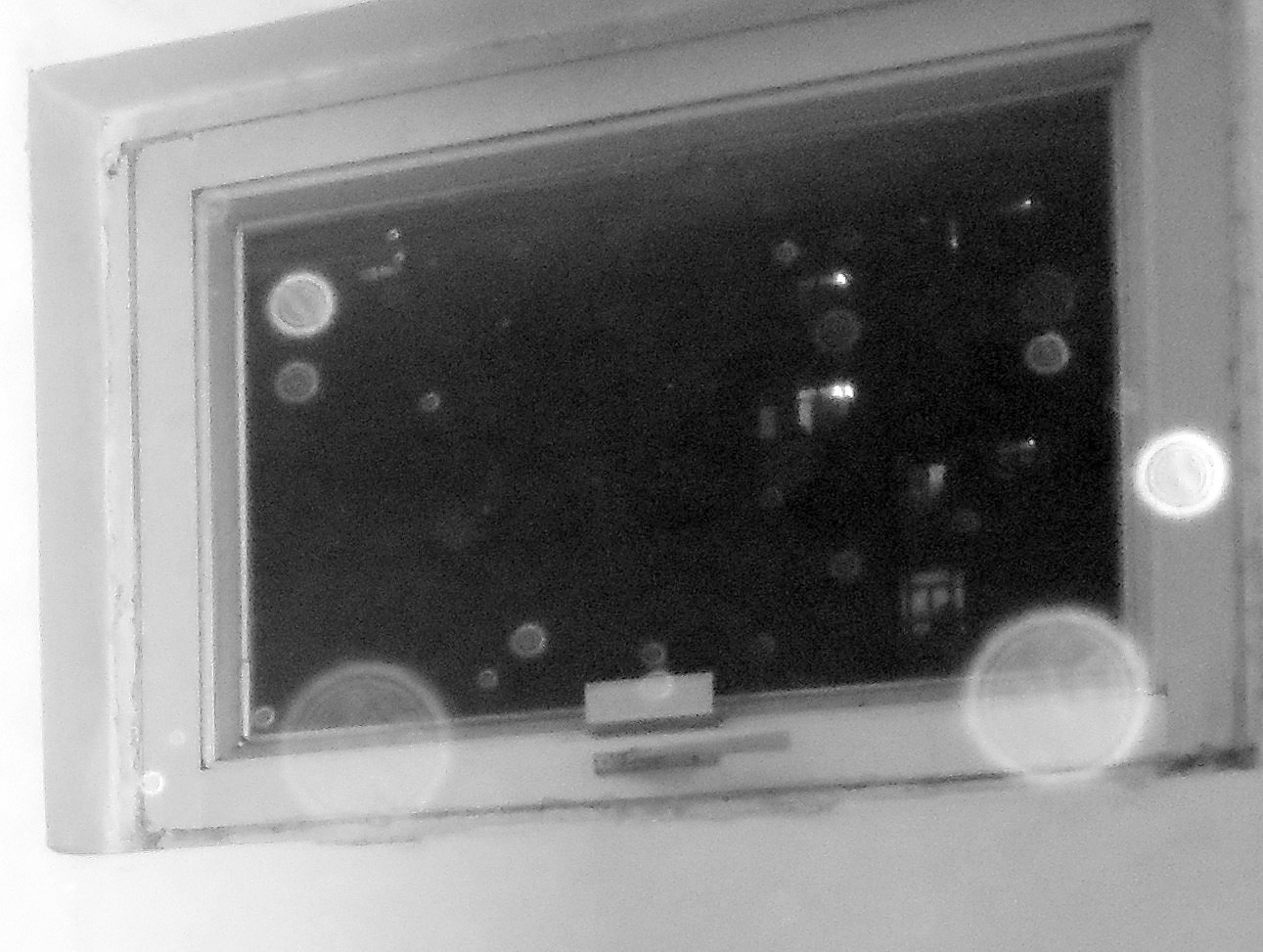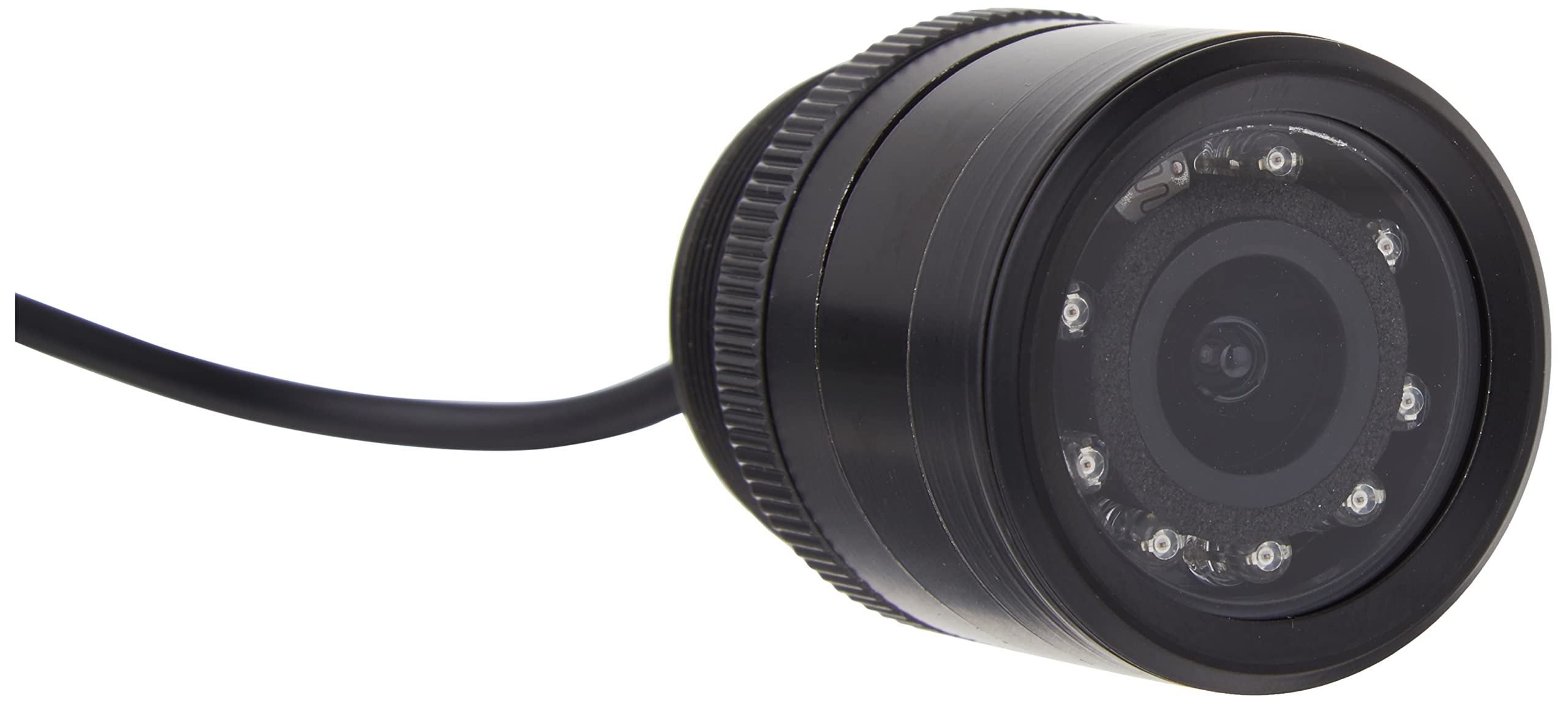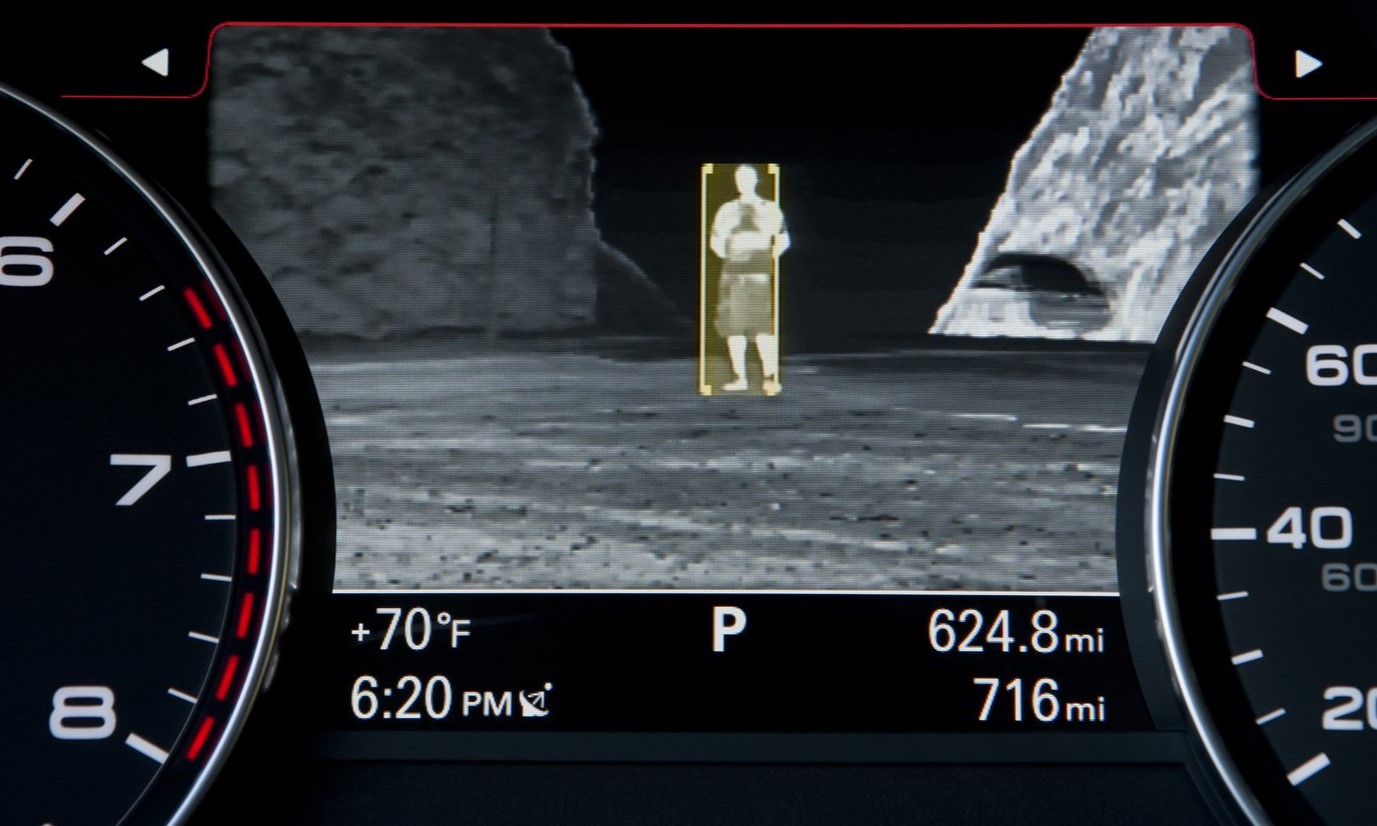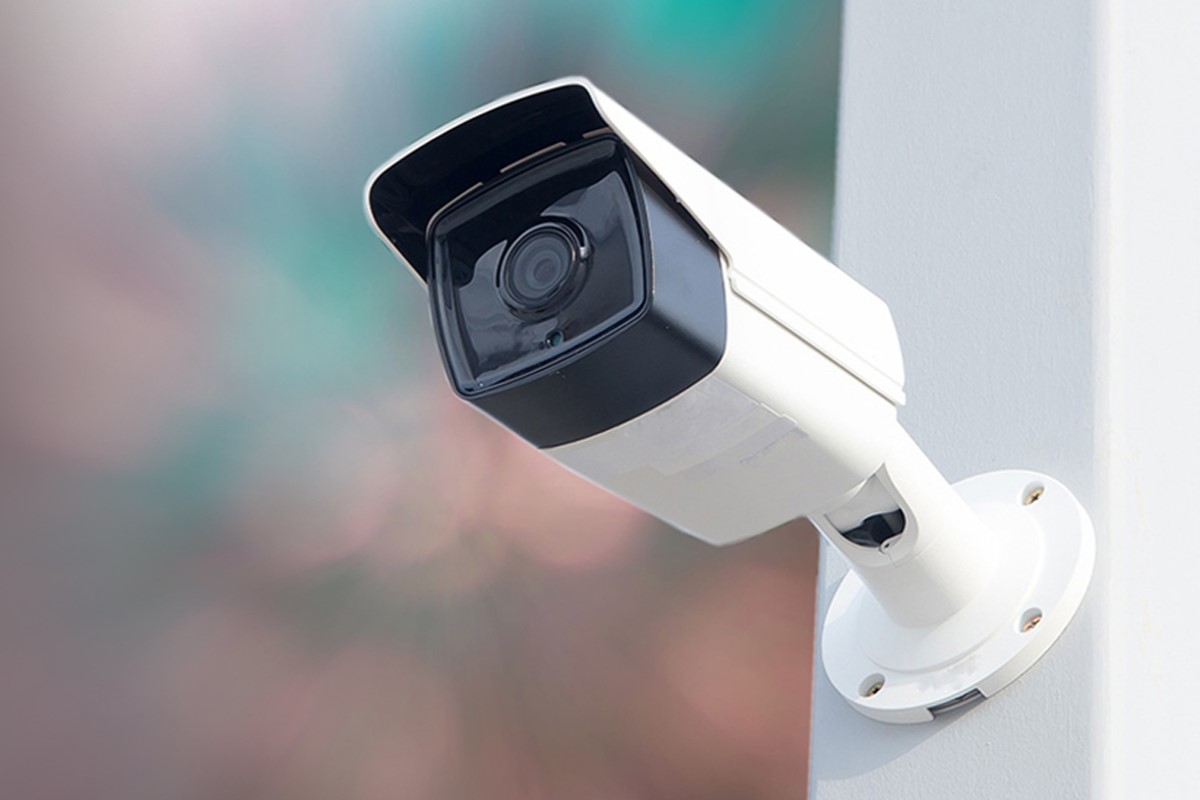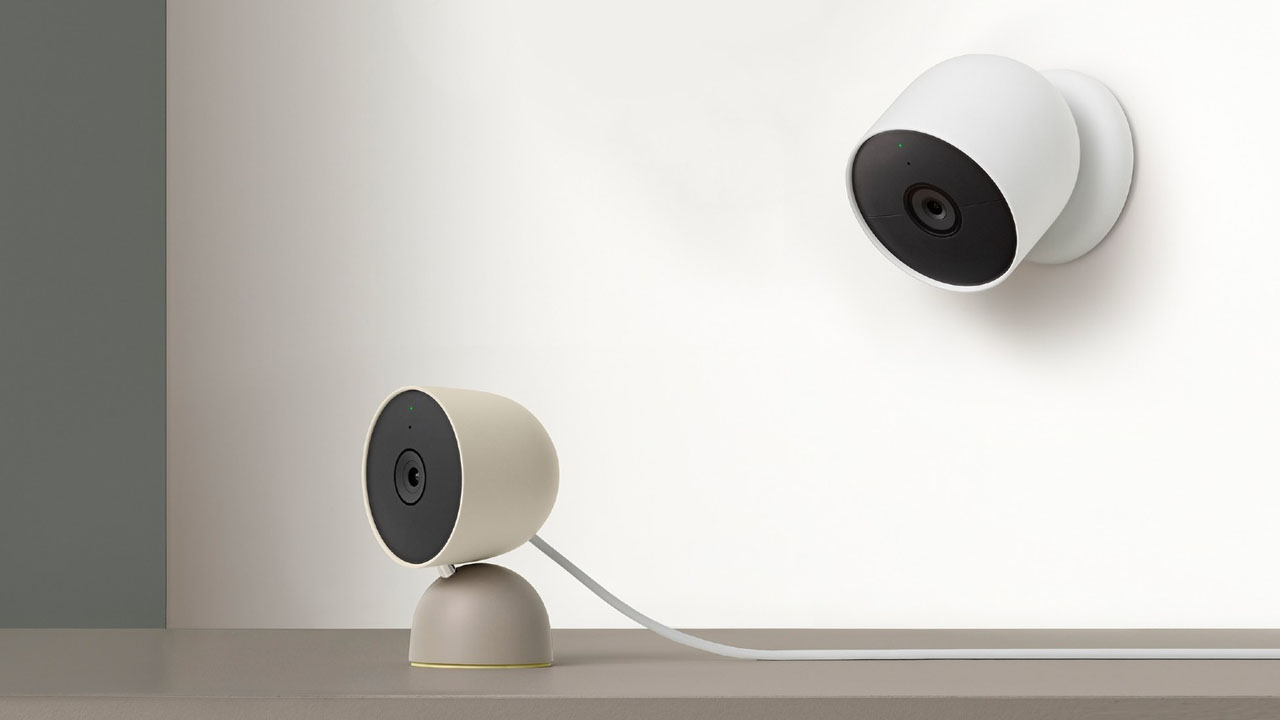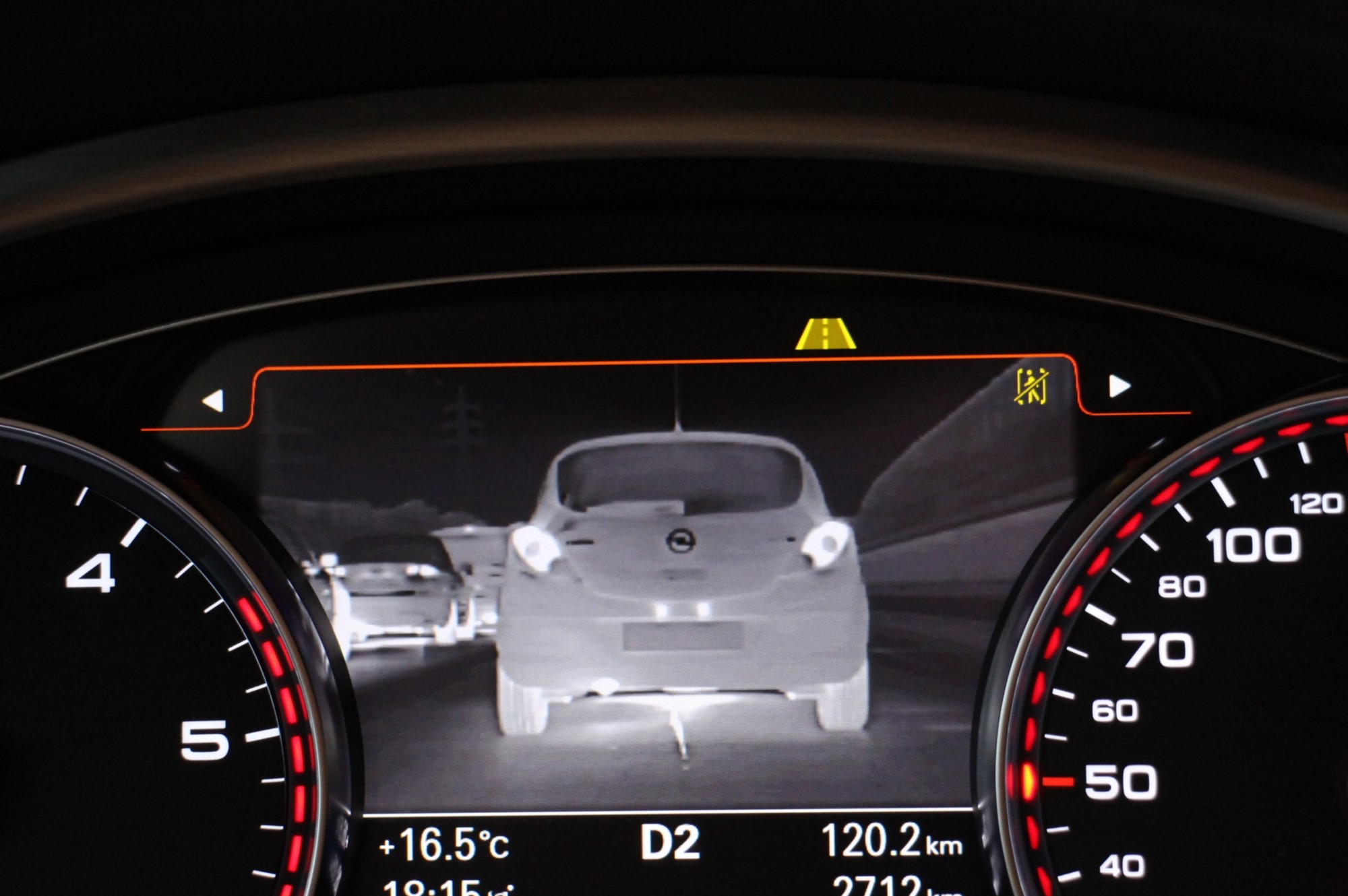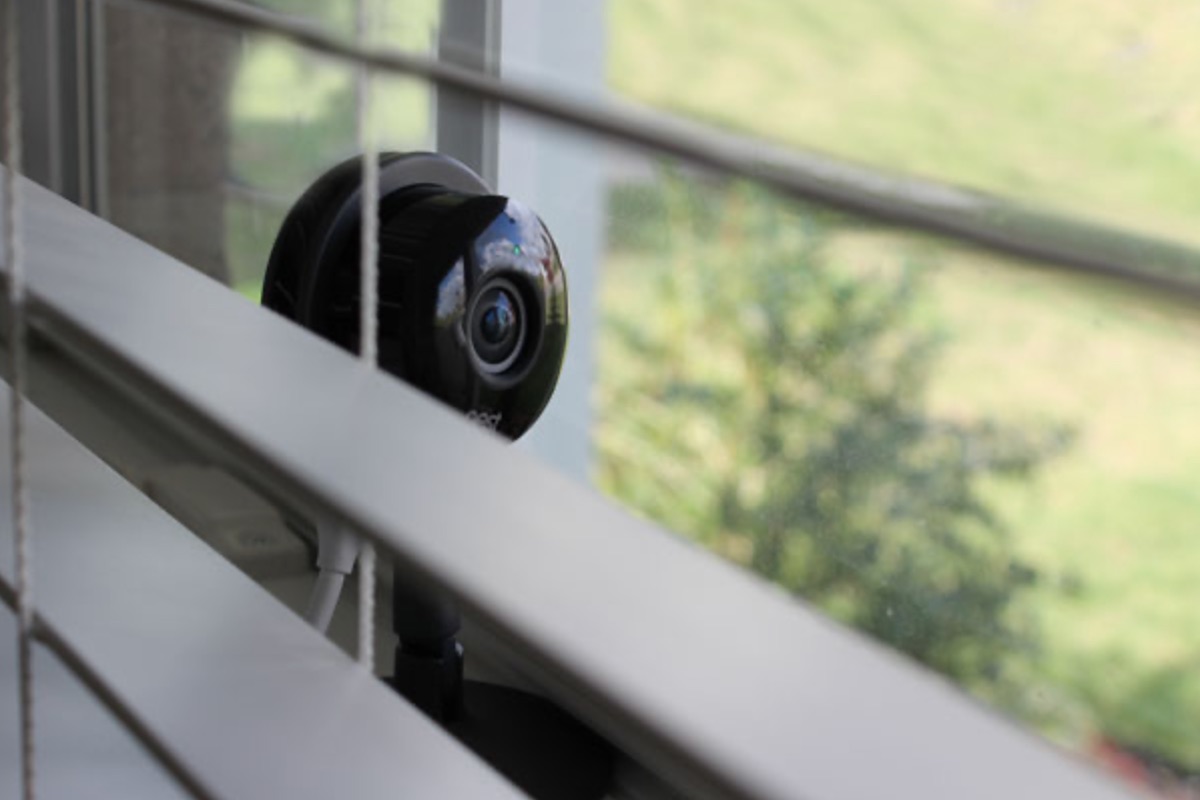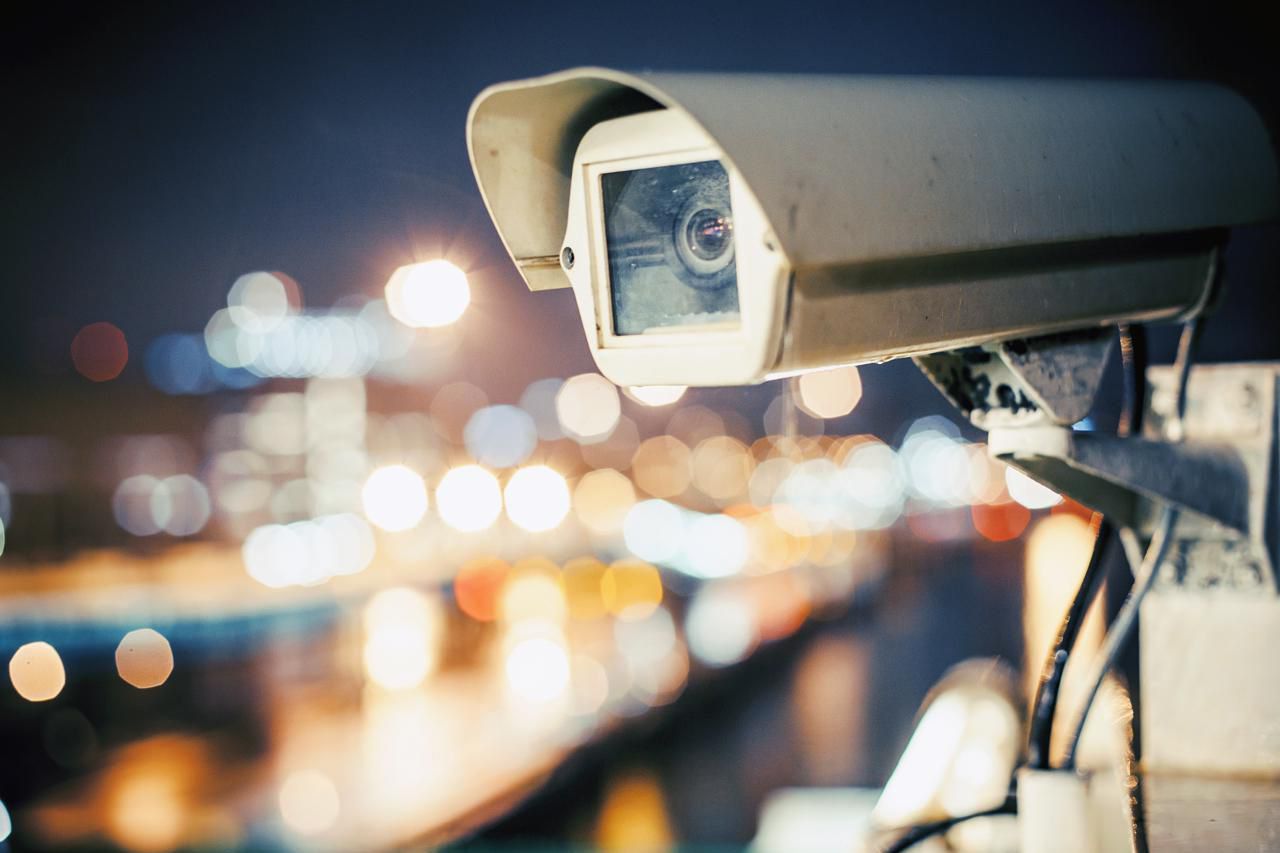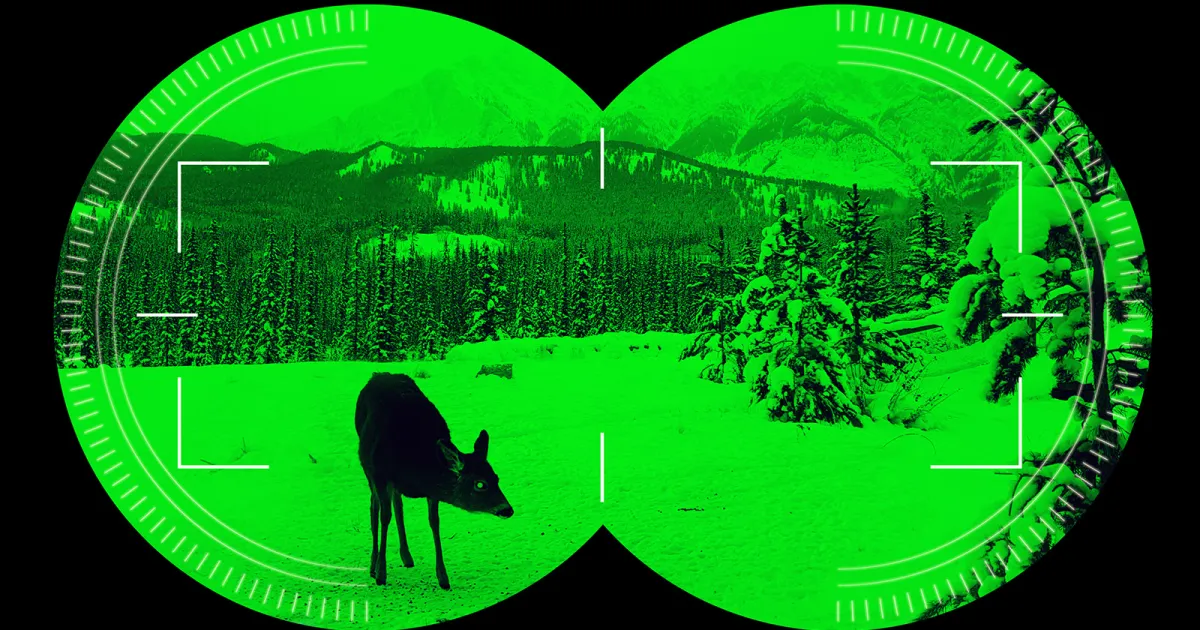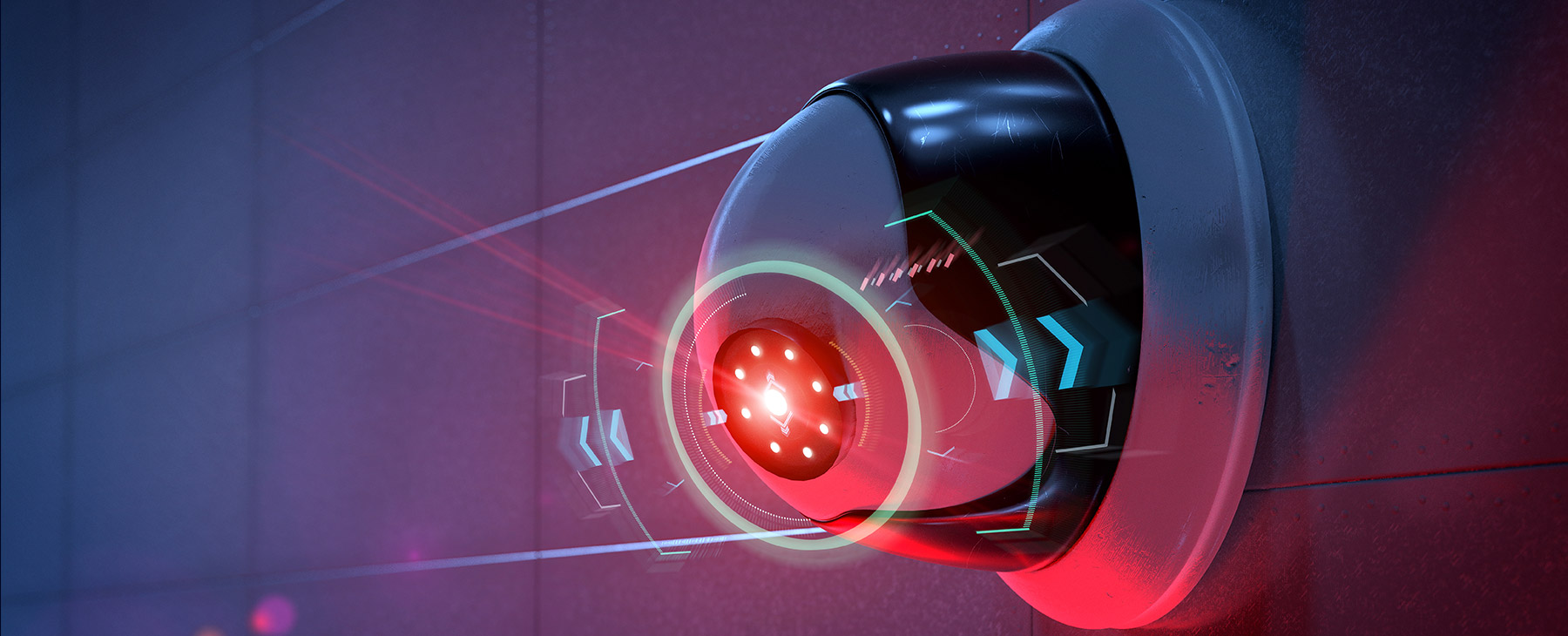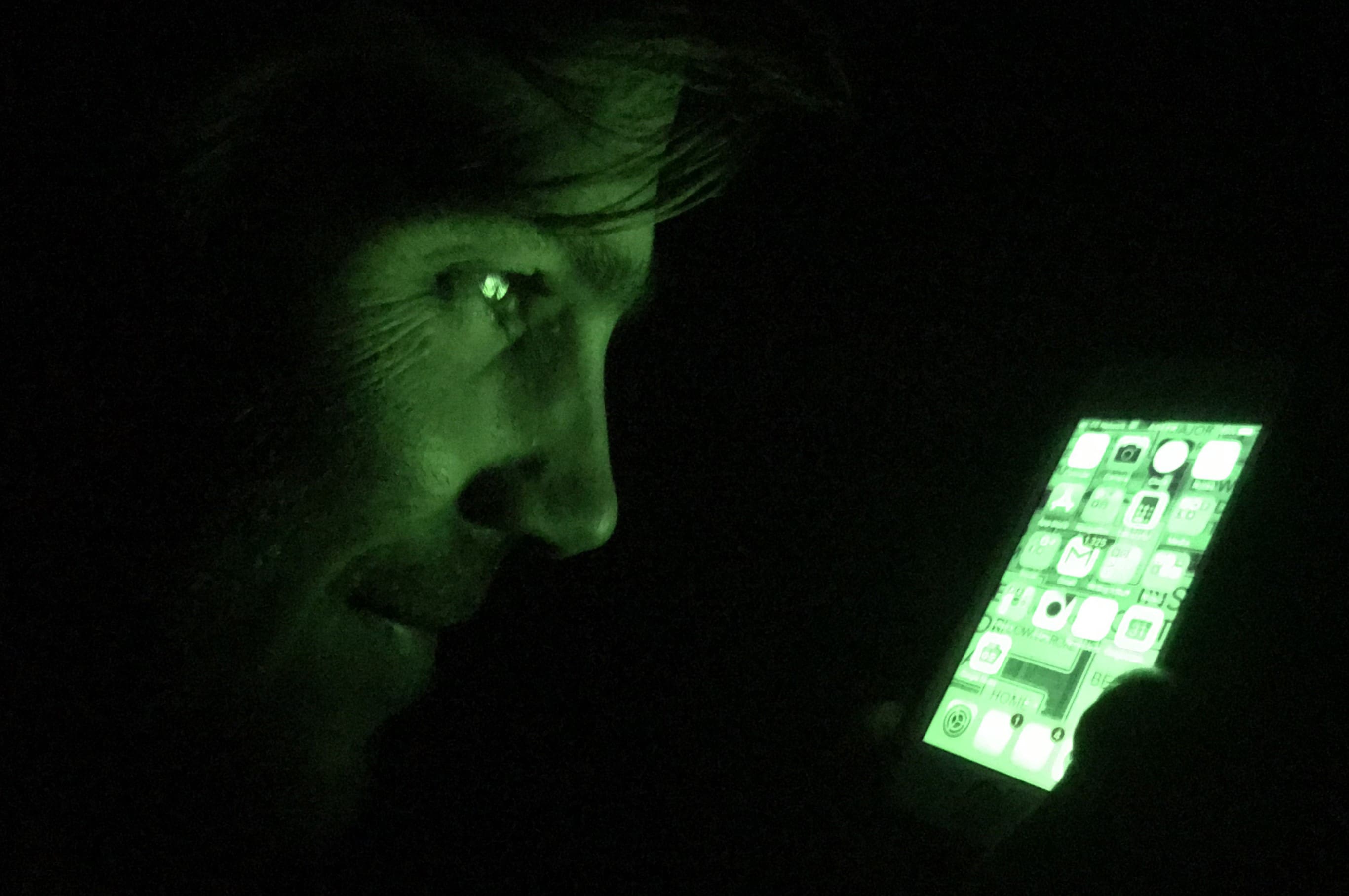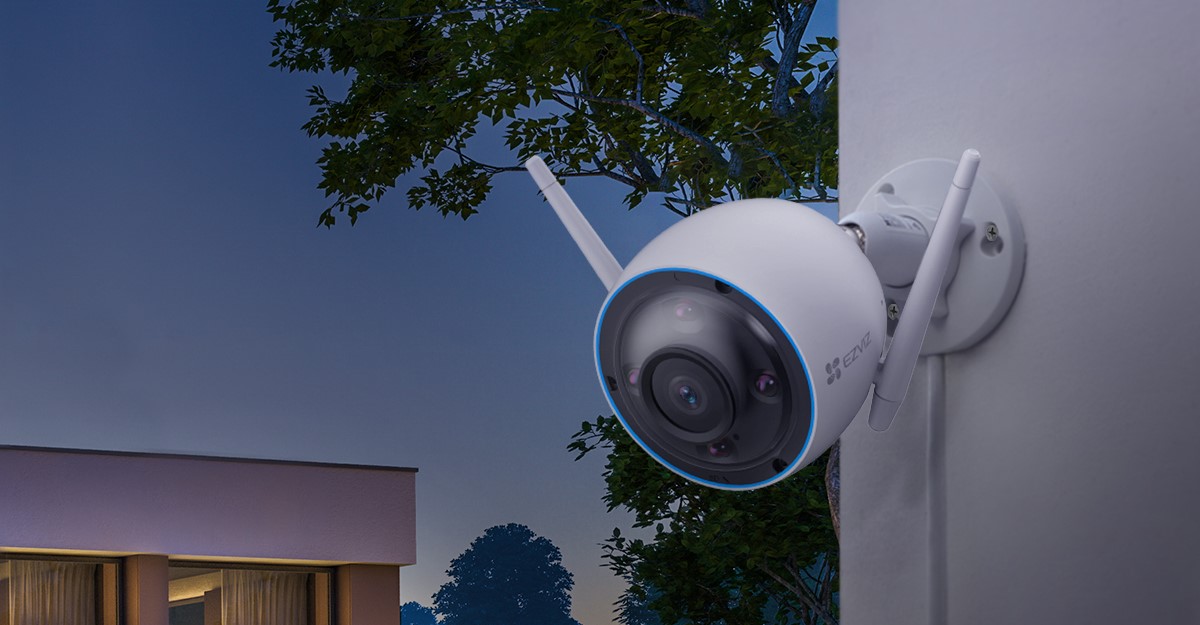Home>Home Security and Surveillance>What Makes A Great Night Vision Camera
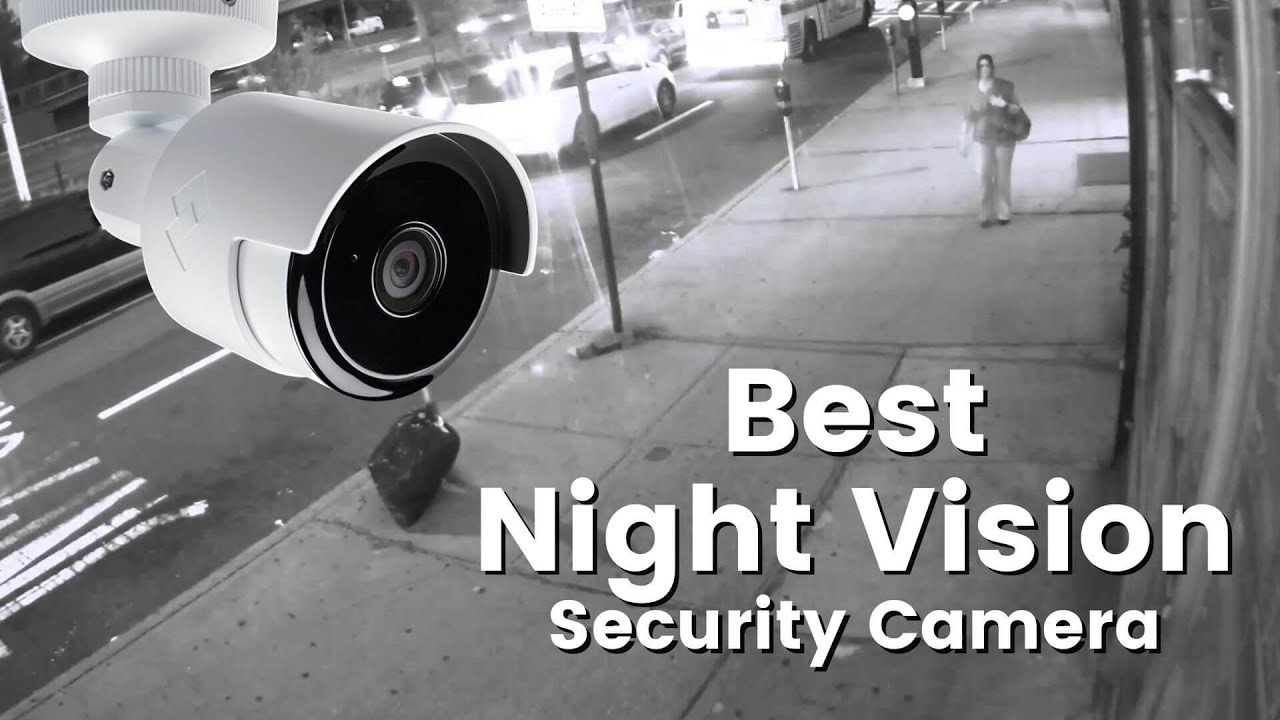

Home Security and Surveillance
What Makes A Great Night Vision Camera
Modified: October 20, 2024
Discover what makes a great night vision camera for your home security and surveillance needs. Find out how to choose the best camera with enhanced visibility and powerful features.
(Many of the links in this article redirect to a specific reviewed product. Your purchase of these products through affiliate links helps to generate commission for Storables.com, at no extra cost. Learn more)
Introduction
Home security and surveillance have become increasingly important in today’s world. As crime rates continue to rise, it’s essential to take proactive measures to protect our homes and loved ones. One of the most effective tools in our home security arsenal is the night vision camera.
Night vision cameras are specially designed to provide clear and detailed footage in low light or complete darkness. They utilize advanced technology to capture images and videos that are not visible to the naked eye. Whether you want to monitor your property for potential threats, keep an eye on your children or pets, or simply have peace of mind knowing that your home is secure, a great night vision camera is a must-have.
In this article, we will dive deeper into what makes a great night vision camera and provide you with essential information to help you make an informed decision when purchasing one. We will explore the key features of these cameras, the different types of night vision technology available, factors to consider when choosing a night vision camera, top brands to look out for, tips on effective usage, and common issues and solutions.
So, if you’re ready to enhance your home security and surveillance setup, let’s explore the fascinating world of night vision cameras!
Key Takeaways:
- Night vision cameras use advanced technology to capture clear images in low light or darkness. They come in different types, such as image intensification and thermal imaging, each with unique strengths for home security.
- When choosing a night vision camera, consider features like resolution, IR illuminators, and wide dynamic range. Top brands like Hikvision and Arlo offer reliable options for effective home surveillance.
Read more: How To Make A Night Vision Camera
Understanding Night Vision Cameras
Night vision cameras are specifically designed to capture clear and detailed images and videos in low light conditions or complete darkness. They achieve this by utilizing advanced technology that enhances the visibility of objects that are otherwise difficult to see with the naked eye.
These cameras typically employ one of two types of night vision technology: image intensification and thermal imaging. Let’s have a closer look at each of these technologies:
1. Image Intensification: This technology amplifies the available light, enabling the camera to create a visible image. It works by collecting ambient light through the camera’s lens and then passing it through an image intensifier tube. Inside the tube, the light is converted into electrons and amplified to create a brighter image. The resulting image is then displayed on a screen or recorded for future reference. Image intensification is commonly used in night vision goggles, binoculars, and monoculars.
2. Thermal Imaging: Unlike image intensification, thermal imaging does not rely on visible light. Instead, it detects the heat emitted by objects and converts it into a visible image, based on the temperature differences. This technology is particularly effective in detecting living beings, as they emit heat. Thermal imaging cameras can produce clear imagery even in complete darkness and are commonly used in wildlife observation, military operations, and search and rescue missions.
Both image intensification and thermal imaging have their advantages and are suited for different purposes. Image intensification is ideal for situations where there is some ambient light available, while thermal imaging excels in complete darkness or when detecting heat signatures is crucial.
Modern night vision cameras often combine both image intensification and thermal imaging technologies to provide the best of both worlds. This dual capability ensures optimal performance across a range of lighting conditions and makes them versatile tools for home security and surveillance.
In the next section, we will explore the key features that make a night vision camera great, helping you understand what to look for when making a purchase.
Key Features of Great Night Vision Cameras
When searching for a night vision camera, there are several key features and specifications to consider. These features will determine the camera’s performance in capturing clear and detailed footage in low light or dark conditions. Here are the essential features to look out for:
- Resolution: The resolution of a night vision camera refers to the amount of detail captured in the footage. Higher resolution cameras will provide clearer and more defined images. Look for cameras with at least 1080p resolution for optimal results.
- IR Illuminators: Infrared (IR) illuminators emit infrared light, which is invisible to the human eye but can be detected by the camera. This technology allows the camera to capture footage in complete darkness. Ensure that the camera you choose has built-in IR illuminators for reliable night vision capabilities.
- Wide Dynamic Range (WDR): WDR technology enables the camera to capture clear images in situations where there are extreme variations in light, such as when bright lights are present in the field of view. This feature ensures that both dark and bright areas are well-balanced, resulting in better visibility and detail in all lighting conditions.
- Field of View (FOV): The field of view refers to the visible area that the camera can capture. A wider field of view allows for more extensive coverage. Consider the specific areas you need to monitor and choose a camera with an appropriate FOV to ensure comprehensive surveillance.
- Zoom Capability: Some night vision cameras offer zoom capabilities, allowing you to focus on specific areas or objects of interest. Optical zoom provides better image quality compared to digital zoom, so prioritize cameras that have optical zoom capabilities for finer details.
- Connectivity and Storage: Check if the camera supports connectivity options such as Wi-Fi or Ethernet, as well as compatibility with mobile devices or home automation systems. Additionally, consider the storage options offered by the camera, such as internal memory, SD card slots, or cloud storage. This ensures that you can easily access and store the captured footage.
- Weather Resistance: If you plan to place the camera outdoors, it’s crucial to choose one that is weather-resistant. Look for cameras with an Ingress Protection (IP) rating that ensures they are protected against dust and water, so they can withstand various weather conditions.
By considering these essential features, you can select a night vision camera that meets your specific needs and provides reliable performance for home security and surveillance. In the next section, we will explore the different types of night vision technology to further enhance your understanding of these cameras.
Types of Night Vision Technology
Night vision technology has significantly advanced over the years, resulting in different types of night vision technology used in cameras. Let’s explore the main types:
- Image Intensification: Image intensification technology, as mentioned earlier, amplifies the available light to create a visible image. It works by collecting light through the camera lens, converting it into electrons, amplifying those electrons, and displaying the enhanced image on a screen. This technology can provide detailed, high-resolution images in low light conditions and is commonly found in night vision goggles, binoculars, and monoculars.
- Thermal Imaging: Thermal imaging technology works by detecting and capturing the heat emitted by objects. Every object with a temperature above absolute zero (-273.15°C or -459.67°F) emits heat, and thermal cameras can sense this heat and convert it into a visible image. The resulting image, known as a thermogram, displays temperature variations as different colors. This technology is especially effective in complete darkness or when there are obstacles that may obstruct the line of sight.
- Near-Infrared Illumination: Near-infrared illumination technology uses infrared light to illuminate the scene and capture clear images. It is commonly used in surveillance cameras and security systems. Near-infrared light is typically invisible to the human eye but is easily detected by the camera, allowing for enhanced visibility in low light conditions.
- Active Illumination: Active illumination technology uses artificial light, such as LEDs or lasers, to illuminate the scene and capture images. These lights are outside the visible spectrum for humans but can be detected by the camera. Active illumination provides clear and vibrant images, even in complete darkness. However, it may be more noticeable and may require a separate power source.
Each type of night vision technology has its strengths and limitations, and the choice depends on the specific requirements and use cases. Image intensification and near-infrared illumination are commonly used in consumer-grade night vision cameras, while thermal imaging and active illumination are often found in specialized surveillance and military-grade cameras.
Understanding the different types of night vision technology will help you make an informed decision when choosing a camera that suits your needs. In the next section, we will explore the factors to consider when selecting a night vision camera for your home security and surveillance.
Factors to Consider when Choosing a Night Vision Camera
Choosing the right night vision camera for your home security and surveillance needs requires careful consideration of several factors. These factors will determine the camera’s effectiveness in capturing clear and detailed footage in low light or dark conditions. Here are the key factors to keep in mind:
- Intended Use: Consider how you plan to use the camera. Are you monitoring the perimeter of your property, keeping an eye on specific areas indoors, or recording footage for evidence? Understanding your specific requirements will help you determine the appropriate type and features of the camera.
- Range: Evaluate the range of the camera’s night vision capabilities. Determine the distance you need the camera to cover and ensure that the camera’s range aligns with your requirements. Keep in mind that various factors, such as ambient light and obstructions, can affect the effective range of the camera.
- Budget: Set a budget that suits your requirements and explore cameras within that price range. It’s important to strike a balance between the features you need and the affordability of the camera. Remember that investing in a higher-quality camera can provide better performance and reliability in the long run.
- Installation: Consider the ease of installation. Some cameras may require professional installation, while others can be easily set up by the user. Determine whether you need a wired or wireless camera, based on your preferences and the availability of power and network connections in the installation area.
- Compatibility: Check if the camera is compatible with your existing home security system or other devices. Compatibility with mobile apps or home automation systems can provide convenience and seamless integration with your existing setup.
- Reviews and Recommendations: Research and read reviews from reputable sources or consult with experts to gather information about the camera’s performance, reliability, and customer satisfaction. This will help you make an informed decision based on real-world experiences.
- Brand Reputation: Consider the reputation of the brand. Opt for well-established and reputable brands that have a track record of producing high-quality night vision cameras. Reliable brands often provide better customer support and warranty options.
By carefully evaluating these factors, you can choose a night vision camera that aligns with your specific needs and provides reliable performance for your home security and surveillance. In the next section, we will explore some of the top night vision camera brands in the market to help you make an informed decision.
When choosing a night vision camera, look for one with a high resolution and infrared capabilities for clear images in low light.
Top Night Vision Camera Brands
When it comes to investing in a night vision camera for your home security and surveillance, it’s essential to choose from reliable and reputable brands. Here are some of the top brands known for their quality night vision cameras:
- Hikvision: Hikvision is a leading brand in the surveillance industry, renowned for its high-quality and innovative products. They offer a wide range of night vision cameras that provide exceptional performance and reliability.
- Arlo: Arlo specializes in wireless security cameras and is known for its user-friendly designs and advanced features. They offer a variety of night vision cameras, including battery-powered, wired, and wireless options.
- Lorex: Lorex offers a comprehensive range of night vision cameras for both home and business use. They provide various camera types, including dome, bullet, and PTZ cameras, ensuring there is an option to suit every need.
- Axis Communications: Axis Communications is a trusted brand in the surveillance industry, known for its high-quality network cameras. They offer a range of night vision cameras that deliver excellent image quality and advanced features, making them suitable for professional and commercial applications.
- Ring: Ring is a well-known brand in the smart home security space. They offer a range of night vision cameras with easy installation options and seamless integration with other Ring products and services.
These are just a few of the top night vision camera brands available in the market. When selecting a brand, it’s vital to consider factors such as product quality, customer support, warranty options, and compatibility with your existing setup. Reading customer reviews and seeking recommendations can also provide valuable insights into the performance and reliability of the cameras offered by these brands.
Now that you have an understanding of some top night vision camera brands, the next section will provide tips on how to use a night vision camera effectively for your home security needs.
How to Use a Night Vision Camera Effectively
A night vision camera can be a valuable tool for enhancing your home security and surveillance. To ensure that you get the most out of your night vision camera, here are some tips on how to use it effectively:
- Placement: Before installing your night vision camera, carefully consider its placement. Identify the areas you want to monitor and ensure that the camera is positioned in a way that captures the desired field of view. Place the camera at a suitable height and angle to maximize its coverage.
- Understanding Lighting: Familiarize yourself with the lighting conditions in the areas you want to monitor. Different cameras can perform differently in various lighting scenarios. Adjust camera settings or use additional lighting, if necessary, to achieve optimal visibility and clarity.
- Regular Maintenance: Keep your night vision camera clean and free from any obstructions. Regularly wipe the lens to remove dirt or smudges that may affect image quality. Check for any signs of damage or malfunction and address them promptly to ensure consistent performance.
- Set Camera Modes: Most night vision cameras offer different modes to suit various situations. Experiment with different modes, such as black and white, colored, or infrared, to find the one that provides the best results for your specific needs.
- Check Camera Settings: Take the time to explore your camera’s settings and adjust them according to your preferences. You may want to adjust features like sensitivity, motion detection, or recording settings to ensure optimal performance and minimize false alerts.
- Review Footage: Regularly review the captured footage to identify any unusual or suspicious activities. This will allow you to proactively address security concerns and take appropriate actions if necessary.
- Combine with Other Security Measures: While a night vision camera is a valuable tool, it’s always beneficial to combine it with other security measures. This can include motion sensor lights, alarms, or a comprehensive home security system for enhanced protection.
- Privacy Considerations: Ensure that you are aware of local laws and regulations regarding privacy and surveillance. Respect the privacy of your neighbors and be mindful of the areas your camera captures to avoid any legal or ethical issues.
By following these tips, you can effectively use your night vision camera to enhance your home security and surveillance efforts. Remember to regularly assess and adjust your camera settings based on changing lighting conditions or specific monitoring needs.
In the next section, we will discuss common issues that may arise with night vision cameras and provide solutions to address them.
Common Issues with Night Vision Cameras and How to Solve Them
While night vision cameras are powerful tools for home security and surveillance, they may sometimes encounter certain issues that can impact their performance. Here are some common issues that can occur with night vision cameras and how to solve them:
- Poor Image Quality: If you notice a decrease in image quality, it could be due to a dirty lens. Clean the lens carefully with a soft, lint-free cloth to remove any smudges or debris. Additionally, check if the camera is on the correct setting for the lighting conditions or adjust the camera’s settings to improve image quality.
- Inadequate Range: If the camera’s night vision range is not sufficient, check if there are any obstacles obstructing the camera’s field of view, such as branches or other objects. Adjust the camera’s position or remove any obstructions to improve the range. Alternatively, consider upgrading to a camera with a longer night vision range.
- Interference: Interference can cause disruptions in the camera’s signal or image quality. Ensure that the camera is placed away from other electronic devices that could interfere with its operation. If necessary, adjust the camera’s frequency or change its Wi-Fi channel to minimize interference.
- False Motion Detection: If you are frequently receiving false motion detection alerts, adjust the sensitivity settings of the camera to minimize false triggers. Experiment with different sensitivity levels until you find the optimal setting that accurately detects motion without triggering false alerts.
- Poor Connectivity: If you are experiencing connectivity issues with your wireless night vision camera, ensure that it is within range of your Wi-Fi router. Check if there are any obstructions or Wi-Fi signal interference that could be affecting the camera’s connectivity. Consider moving the camera closer to the router or installing a Wi-Fi extender to improve the signal strength.
- Power Supply Problems: If your night vision camera is experiencing power supply issues, check if the power cables are securely connected. Verify that the power source is working correctly and consider using a surge protector to protect the camera from power fluctuations. If necessary, replace the power cables or consult a professional for assistance.
By identifying and addressing these common issues, you can ensure that your night vision camera operates optimally and delivers reliable performance for your home security and surveillance needs. If you encounter persistent issues that cannot be resolved, contact the camera’s manufacturer or seek assistance from a professional technician.
Now that we’ve covered these common issues, let’s conclude our discussion on night vision cameras.
Conclusion
When it comes to home security and surveillance, a night vision camera is an invaluable tool that allows you to capture clear and detailed footage in low light or complete darkness. Whether you want to monitor your property, keep an eye on your loved ones, or simply have peace of mind knowing that your home is secure, a great night vision camera is a must-have.
In this article, we explored the key features of great night vision cameras, including resolution, IR illuminators, wide dynamic range, and field of view. We also delved into the different types of night vision technology, such as image intensification, thermal imaging, near-infrared illumination, and active illumination.
Factors to consider when choosing a night vision camera, including the intended use, range, budget, installation, compatibility, reviews, and brand reputation, were discussed to help you make an informed decision. We also provided insights into some top night vision camera brands known for their quality and reliability in the market.
To use a night vision camera effectively, we emphasized the importance of proper camera placement, understanding lighting conditions, regular maintenance, adjusting camera modes and settings, reviewing footage, combining with other security measures, and considering privacy considerations.
Additionally, we addressed common issues that may arise with night vision cameras, such as poor image quality, inadequate range, interference, false motion detection, poor connectivity, and power supply problems. Solutions for addressing these issues were provided to ensure optimal performance.
In conclusion, incorporating a night vision camera into your home security and surveillance setup can greatly enhance your peace of mind and provide invaluable protection. By considering the key features, understanding the types of technology, and addressing common issues, you can choose and use a night vision camera effectively to safeguard your home and loved ones.
So, take the necessary steps to secure your property and invest in a great night vision camera. Remember, maintaining a safe and secure home is an ongoing commitment, and a night vision camera is an essential tool in achieving that goal.
Frequently Asked Questions about What Makes A Great Night Vision Camera
Was this page helpful?
At Storables.com, we guarantee accurate and reliable information. Our content, validated by Expert Board Contributors, is crafted following stringent Editorial Policies. We're committed to providing you with well-researched, expert-backed insights for all your informational needs.
